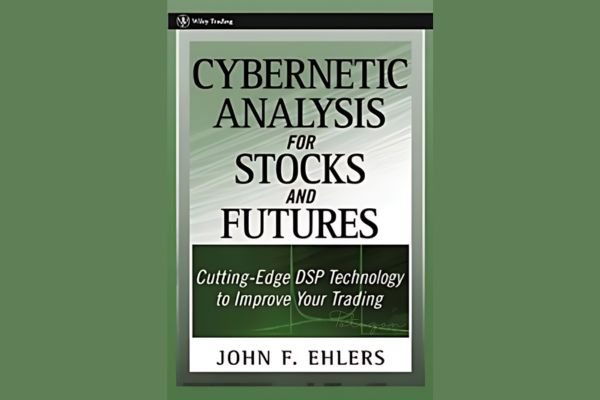-
×
 High Probability Trading Using Elliott Wave And Fibonacci Analysis withVic Patel - Forex Training Group
1 × $10.00
High Probability Trading Using Elliott Wave And Fibonacci Analysis withVic Patel - Forex Training Group
1 × $10.00 -
×
 Pristine - Noble DraKoln – The Complete Liverpool Futures Seminar Series
1 × $6.00
Pristine - Noble DraKoln – The Complete Liverpool Futures Seminar Series
1 × $6.00 -
×
 How To Read The Market Professionally with TradeSmart
1 × $27.00
How To Read The Market Professionally with TradeSmart
1 × $27.00 -
×
 Cyber trading university - Pro Strategies for Trading Stocks or Options Workshop
1 × $15.00
Cyber trading university - Pro Strategies for Trading Stocks or Options Workshop
1 × $15.00 -
×
 Cybernetic Analysis for Stocks & Futures with John Ehlers
1 × $6.00
Cybernetic Analysis for Stocks & Futures with John Ehlers
1 × $6.00 -
×
 Crystal Ball Pack PLUS bonus Live Trade By Pat Mitchell - Trick Trades
1 × $20.00
Crystal Ball Pack PLUS bonus Live Trade By Pat Mitchell - Trick Trades
1 × $20.00 -
×
 Order flow self-study training program with iMFtracker
1 × $10.00
Order flow self-study training program with iMFtracker
1 × $10.00 -
×
 Options Trading & Ultimate MasterClass With Tyrone Abela - FX Evolution
1 × $54.00
Options Trading & Ultimate MasterClass With Tyrone Abela - FX Evolution
1 × $54.00 -
×
 The Orderflows Trade Opportunities Encyclopedia with Michael Valtos
1 × $8.00
The Orderflows Trade Opportunities Encyclopedia with Michael Valtos
1 × $8.00 -
×
 TradeCraft: Your Path to Peak Performance Trading By Adam Grimes
1 × $15.00
TradeCraft: Your Path to Peak Performance Trading By Adam Grimes
1 × $15.00
Cycles: What they are, what they mean, how to profit by them – Dick Stoken
$6.00
File Size: Coming soon!
Delivery Time: 1–12 hours
Media Type: Online Course
Content Proof: Watch Here!
You may check content proof of “Cycles: What they are, what they mean, how to profit by them – Dick Stoken” below:

Cycles: What They Are, What They Mean, How to Profit by Them by Dick Stoken
Introduction: Unlocking the Mystery of Cycles
Investing cycles can often seem like a mystery. Dick Stoken’s seminal work, “Cycles: What They Are, What They Mean, How to Profit by Them,” demystifies this concept, providing a roadmap for investors to understand and capitalize on market cycles.
Who is Dick Stoken?
1. Background of an Investment Theorist: Exploring the professional journey of Dick Stoken, a significant figure in investment theory.
2. Contributions to Financial Understanding: His influence on the perception of market cycles and their impacts.
Understanding Cycles
1. Definition of a Cycle: What exactly is a cycle in the context of financial markets?
2. The Types of Cycles: Breaking down the different types of cycles observed in the market.
The Significance of Cycles in Investing
1. Historical Perspectives: How historical data supports the theory of cyclical investments.
2. Case Studies: Real-world examples of cycles in action and their outcomes.
Identifying Cycles
1. Tools for Tracking Cycles: Discussing the methodologies and tools used to identify cycles.
2. Indicators and Signals: Key indicators that suggest a cycle is beginning or ending.
Strategies for Trading Cycles
1. Timing the Market: Strategies for entering and exiting the market at opportune times.
2. Risk Management: How to minimize risks when trading based on cycle theories.
Psychological Aspects of Cycle Investing
1. Emotional Challenges: The psychological hurdles investors face when trading on cycles.
2. Overcoming Bias: Techniques to maintain objectivity and avoid common cognitive biases.
The Role of External Factors
1. Economic Indicators: How external economic factors can influence cycles.
2. Geopolitical Events: The impact of global events on market cycles.
Technology and Cycle Analysis
1. The Role of Modern Technology: How advancements in technology have improved cycle analysis.
2. Software and Applications: Tools that can help investors identify and analyze cycles more efficiently.
Long-Term vs. Short-Term Cycle Trading
1. Benefits and Drawbacks: The advantages and disadvantages of long-term versus short-term cycle trading.
2. Choosing a Strategy: How to decide which approach suits your investment style and goals.
Integrating Cycles with Other Investment Theories
1. Combining Approaches: How cycle theory complements other investment strategies.
2. Diversification: Using cycle theory to diversify a portfolio effectively.
Advanced Techniques in Cycle Trading
1. Quantitative Analysis: Employing quantitative methods to refine cycle trading strategies.
2. Algorithmic Trading: The use of algorithms in predicting and trading market cycles.
Conclusion
Dick Stoken’s “Cycles” provides invaluable insights into the rhythmic patterns of the market, offering strategies that investors can use to enhance their trading outcomes. Understanding and utilizing these cycles can be a powerful tool for any investor looking to improve their market performance.
FAQs
- What is the core message of Dick Stoken’s ‘Cycles’?
- It emphasizes the importance of recognizing and understanding market cycles to make profitable investment decisions.
- How can investors identify market cycles effectively?
- By using a combination of historical data analysis, economic indicators, and modern software tools.
- What are the risks of cycle-based trading?
- The main risks include timing errors and the potential impact of unforeseen external events.
- Can cycle theory be applied to all types of investments?
- Yes, cycle theory can be applied across various asset classes, though its effectiveness can vary.
- How important is technology in analyzing investment cycles today?
- Technology plays a crucial role in analyzing and predicting cycles with greater accuracy and speed.
Be the first to review “Cycles: What they are, what they mean, how to profit by them – Dick Stoken” Cancel reply
You must be logged in to post a review.
Related products
Forex Trading
Forex Trading
Forex Trading
The Complete Guide to Multiple Time Frame Analysis & Reading Price Action with Aiman Almansoori
Forex Trading
Forex Trading
Forex Trading
Forex Trading
Forex Trading
Forex Trading
Forex Trading
















Reviews
There are no reviews yet.